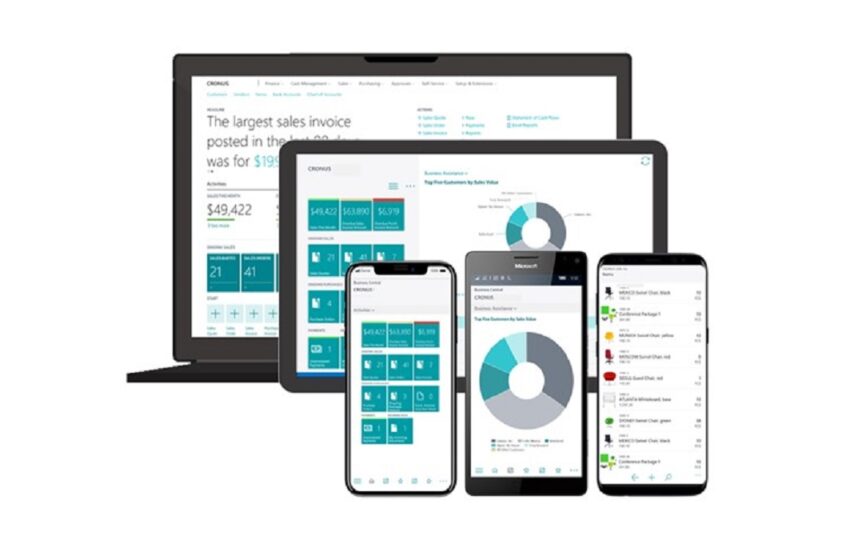If you work in the corporate sector, you are well aware of how important it is to have an enterprise resource planning (ERP) system that is dependable and effective. There are a lot of different choices available, but Business Central and Dynamics 365 are now two of the more popular ones. Even though both are produced by Microsoft, there are significant distinctions between the two that often cause owners of businesses to be perplexed. This article will help you grasp the distinctions between Business Central and Dynamics 365, as well as clarify the concept of Business Central.
What is Microsoft Dynamics 365 Business Central?
Microsoft Dynamics 365 Business Central was designed with the particular intention of assisting small and mid-sized businesses in driving forward new features that automate and simplify core business activities effectively. This user-friendly software package, which is built on the capabilities of Dynamics NAV, can be easily customized to meet the demands of the business and assists administrators in making well-informed choices that are in the best interest of the company. In addition, additional cloud services provided by Microsoft, like Power BI and Office 365, may be used to make modifications to the software.
With Business Central, you can implement a single, all-encompassing solution by automatically bringing together the many systems and procedures that are used to handle financials, sales, and service, as well as operations. For a solution that is entirely integrated, you can interface easily with corporate tools such as payroll, banking, and CRM systems, as well as industry-specific platforms. You can run your company while simultaneously gaining a comprehensive picture of the activities carried out by your company thanks to the many integrated functionalities. Business Central, which is part of the Microsoft business software ecosystem, is capable of creating a completely integrated system by integrating with a variety of tools, including Power BI, Microsoft Flow, and others.
- Begin with Little and Progress
It might be intimidating to begin a new project or to work toward accomplishing a goal, but it is essential to keep in mind that any progress, no matter how little, is still progress. Start with a manageable task and gradually take on more responsibility rather than overloading oneself with a massive assignment. Your ever-changing company’s needs may be easily accommodated by the adaptable nature of the Dynamics 365 Business Central platform. Start with a limited solution and progressively increase its scope as the problem evolves. This attitude serves as the basis for Dynamic Central’s approach to doing business, and the Dynamics Business Central Consulting team is committed to assisting companies of all sizes in accomplishing their objectives.
- Breaking the Silos
Consolidating numerous departments into one can help simplify operations, and increasing efficiency may be accomplished by automating tasks and processes. Within an organization, silos function similarly to walls in that they prevent communication between the various sections. The free flow of information and ideas is obstructed as a result of these restrictions, which may be detrimental to both development and creativity. To break down these silos, one must adjust their mentality, be open to listening to others, and have the will to work together toward shared objectives. Applications from Microsoft Office, including Outlook, Word, and Excel, are now fully integrated.
- Gain Insights
Connected data, increased business analytics, and precise forecasting all provide advantages to businesses and make it possible for those businesses to make decisions based on the data. It is essential to acquire insights that are helpful to be able to make good judgments in one’s personal as well as professional life. These realizations have the potential to assist us in seeing patterns and trends that we may have otherwise missed, so providing us with a more in-depth comprehension of our environment.
- The Management of Human Resources
Both of these software packages are equipped with human resource management tools, such as employee self-service, payroll, benefits, time and attendance tracking, and so on. Additionally, it guarantees that workers have access to information that is accurate as well as up-to-date about their salary and benefits. It lessens the administrative load that comes with handling HR responsibilities for firms, which in turn frees up HR employees to concentrate on more strategic activities.
Bottom Line
To provide a summary, Business Central and Dynamics 365 share some capabilities. Nevertheless, the fundamental difference between the two lies in the kind of clients that each was developed to serve. The Business Central platform is tailored to meet the needs of smaller and medium-sized businesses, in contrast to Dynamics 365, which was designed for usage in more large enterprises. Regardless of the size of your organization, each one of these software solutions may be able to help you improve your bottom line by enhancing the efficiency of your business operations.



